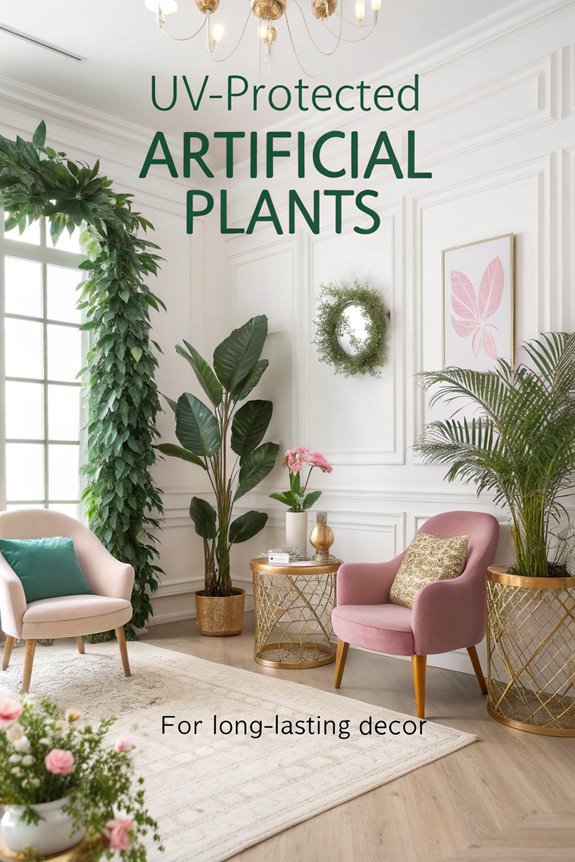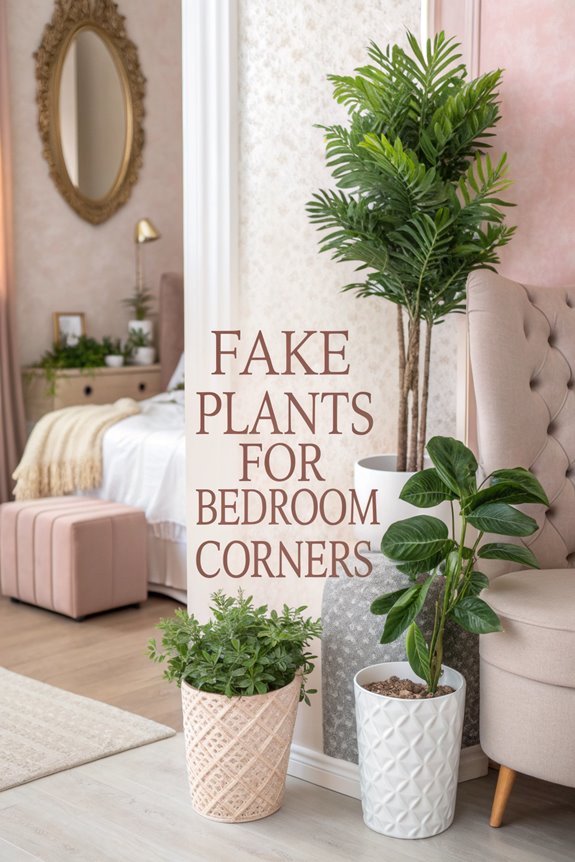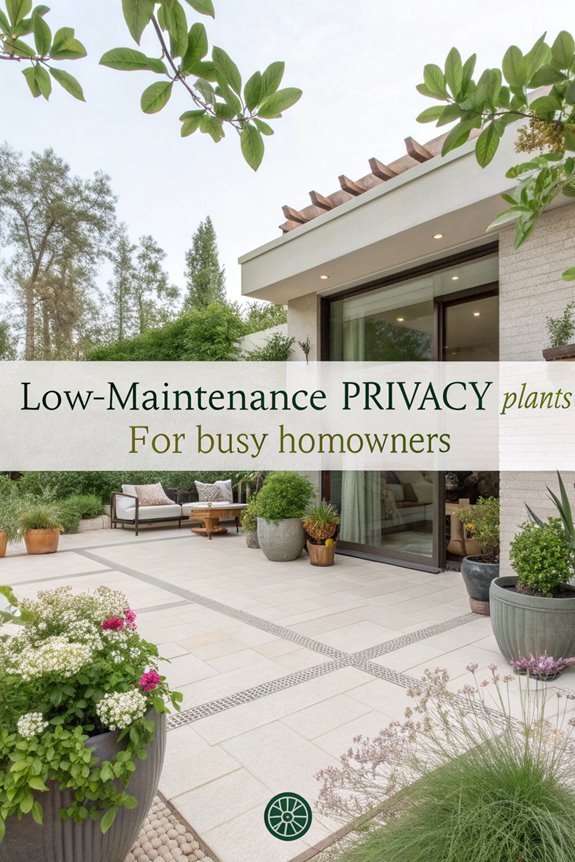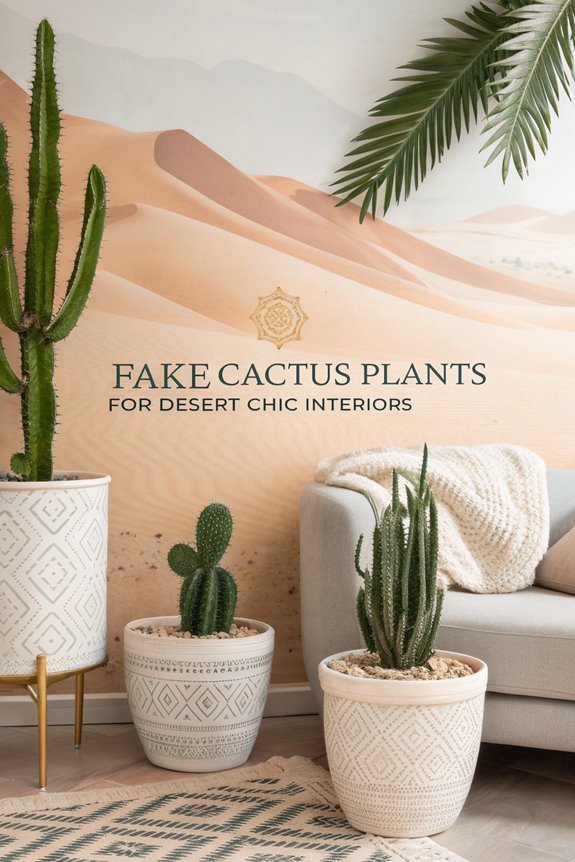25 Indoor Plant Care Tips for Beginners
Selecting the right indoor plants and understanding their care requirements can enhance your living space. With a touch of patience and curiosity, you can create a thriving green environment.
To choose the best plants for your home, consider their specific needs and your space available. Let’s dive into some key tips to embark on your indoor gardening journey!
Choose the Right Plants for Your Space

Have you ever wondered how to pick the perfect plants for your space? Choosing the right plants is like finding the ideal pair of shoes—they need to fit your lifestyle!
Think about your daily routine. Do you travel a lot or work long hours? If so, low-maintenance plants like succulents or snake plants could be your best buddies.
Got kids or pets? Opt for non-toxic varieties to keep everyone safe.
Remember, each plant has its own personality, just like people! So, whether you want a dramatic statement or a subtle touch, let your space reflect your unique style.
Happy planting!
Understand Light Requirements

Picking the right plants is only half the battle; understanding their light needs is the other half! Each plant has different light requirements, so don’t just toss them in a corner and hope for the best.
Some love bright, indirect light, while others thrive in low light—like the introverts of the plant world! Observe your space; is it sunny or shady? You might need to move your plants around until you find their happy spot.
Watering Basics

Watering your indoor plants is like giving them a revitalizing drink after a long day—just the right amount can make all the difference!
You don’t want to drown them, but a little thirst can lead to drooping leaves. Check the top inch of soil; if it’s dry, it’s time to water.
When you do, give them a good soak until water drains out the bottom. Remember, every plant is different, so keep an eye on their needs.
Think of it as a little dance: you lead, they follow, and together you’ll create a vibrant indoor oasis!
Know Your Soil

Soil isn’t just dirt—it’s the cozy bed where your plants snuggle up and thrive! Understanding your soil is essential for your plant’s success.
Different plants have different needs; some love a fluffy mix of peat and perlite, while others prefer something heavier, like clay.
Don’t just grab any old soil from the garage—choose wisely! Get to know your plant’s preferences and give it the right environment.
Remember, happy roots make happy plants! So, dig in, have fun experimenting, and don’t be afraid to get a little messy.
Your plants will thank you with vibrant leaves and cheerful blooms!
Humidity Matters

After you’ve set up the perfect soil for your leafy friends, don’t forget about humidity—it’s like the secret sauce in your plant care recipe!
Most indoor plants thrive in humidity levels around 40-60%. If your air’s too dry, your plants might get cranky.
Here are three fun ways to boost humidity:
- Misting – Lightly mist your plants with water, like giving them a rejuvenating spa day!
- Pebble Tray – Place a tray of water and pebbles beneath your pot to create a mini rainforest effect.
- Group Plants – Cluster your plants together; they’ll share the moisture like good buddies!
Keep that humidity up, and watch your plants flourish!
Fertilizing Your Plants

When it comes to keeping your indoor plants happy and healthy, fertilizing is a must! Think of it as giving your leafy friends a tasty meal. You don’t want to overdo it, though—too much fertilizer can turn your plant into a hulk!
A good rule of thumb is to fertilize every 4-6 weeks during the growing season. Use a balanced, water-soluble fertilizer, and remember to dilute it—your plants aren’t fans of strong flavors!
Always water before fertilizing, so your plants don’t get burned. With a little love and the right nutrients, you’ll have thriving greenery in no time!
Repotting Techniques

Repotting your plants can feel a bit like giving them a new home—one where they can stretch their roots and thrive!
It’s a great opportunity to refresh their environment. Here’s how to do it right:
- Choose the Right Pot: Pick one that’s 1-2 inches larger in diameter than the current pot.
- Use Fresh Soil: A nutrient-rich mix helps your plant adjust and grow strong.
- Handle with Care: Gently loosen the roots and place them in the new pot, ensuring they’re not too cramped.
Now, watch your green friends flourish in their spiffy new digs!
Pruning and Trimming

Once your plants are settled into their new pots, it’s time to give them a little grooming! Pruning and trimming help keep your plants healthy and looking fabulous.
Start by snipping off any yellow or dead leaves—think of it as giving them a fresh haircut. You don’t want your plant to look like it just rolled out of bed!
Regularly trimming back leggy growth encourages bushier plants. Just remember, less is more; you don’t want to send your plant into shock.
Pest Control Strategies

Pest control can feel like a challenging task, but with a few simple strategies, you’ll have those pesky critters running for the hills!
Start by inspecting your plants regularly; a keen eye can catch trouble early.
Here are three effective strategies to keep pests at bay:
- Neem Oil: This natural pesticide disrupts pest life cycles without harming your plant.
- Diatomaceous Earth: Sprinkle this powder around your plants to deter crawling insects—it’s like a mini obstacle course for them!
- Soap Spray: Mix water with mild soap and spray it on affected leaves; it suffocates soft-bodied pests.
Happy pest-busting!
Signs of Plant Stress

When you notice your plant looking a little off, it’s like your leafy friend is sending you a not-so-subtle SOS!
Pay attention to yellowing leaves, wilting, or brown tips—these are signs that something’s amiss. You might also see stunted growth or spots on the leaves, which can be distress signals.
If your plant’s dropping leaves like it’s shedding for winter, that’s a red flag, too!
Remember, plants can’t talk, so they rely on you to figure out what’s wrong. Treat them right, and they’ll reward you with lush greenery and vibrant life.
Your plant’s happiness is in your hands!
Use Proper Drainage

Proper drainage is like the superhero of indoor plant care—without it, your plants can quickly find themselves in a sticky situation!
To keep your green friends happy, make sure you follow these simple steps:
- Choose the Right Pot: Always use pots with drainage holes; they’re essential for preventing water buildup.
- Use Quality Soil: A well-aerated soil mix allows excess water to escape, keeping roots healthy.
- Elevate Your Pots: Consider using pot feet or trays to prevent water from pooling underneath your plant.
With proper drainage, your plants will thrive, and you’ll be the proud parent of a flourishing indoor jungle!
Temperature Considerations

While you might think that plants are pretty low-maintenance, they actually have their own temperature preferences that can make or break their happiness!
Most indoor plants thrive in temperatures between 65°F and 75°F, so keep them away from chilly drafts or scorching heat. Your plants won’t appreciate hanging out near a window in winter, just like you wouldn’t want to sit outside in a snowstorm!
If your home gets too hot, consider using a fan or moving them to a cooler spot.
Grouping Plants

Have you ever wondered how to create a mini jungle right in your living room? Grouping your plants is a fantastic way to achieve that lush look while making care easier.
Here’s how to do it:
- Mix Sizes: Combine tall plants with shorter ones for visual interest.
- Consider Light Needs: Group plants with similar light requirements together, so everyone feels at home.
- Play with Textures: Pair smooth-leaved plants with ones that have rough or variegated leaves for a dynamic display.
Rotate Your Plants

To keep your plants happy and thriving, rotating them regularly is a simple yet effective trick that can make a big difference.
Plants naturally grow toward light, so turning them helps guarantee they get even exposure all around. This prevents them from leaning or becoming lopsided, giving them a more balanced look.
Plus, a little spin can keep your plants from getting too cozy in one spot—who wants a lazy plant, right?
Aim to rotate them every couple of weeks. Your greenery will thank you, and you’ll enjoy the vibrant, healthy display of nature in your home!
Seasonal Care Adjustments

As the seasons change, your indoor plants might need a little extra TLC to keep them thriving.
Don’t worry, it’s not as intimidating as it sounds! Here are three simple adjustments you can make:
- Light: Move your plants closer to windows in winter, and give them a bit of shade in the summer.
- Water: Check the soil; it dries out faster in warmer months, so water more often.
- Humidity: Keep an eye on humidity levels; dry winter air can be tough, so consider misting your plants or using a humidifier.
Your leafy friends will thank you!
Choosing the Right Containers

Choosing the right containers for your indoor plants can feel like a fun puzzle, and it’s one that can really make a difference in your plant’s happiness!
Start by considering size—too small, and your plant might feel cramped; too big, and it could drown in soil.
Drainage holes are a must; nobody likes soggy roots!
Think about materials too; terracotta breathes well, while plastic holds moisture longer.
Color and style matter, too! A vibrant pot can brighten your space.
So, pick something that reflects your personality, and watch your plants thrive in their new stylish digs.
Happy planting!
Understanding Plant Growth Patterns

Understanding how plants grow can feel like uncovering a little secret about nature’s magic, and it’s easier than you might think!
Plants have unique growth patterns that can be fascinating to observe. Here are three key factors to evaluate:
- Light: Plants lean towards light sources, so don’t be surprised when yours seems to stretch toward the window!
- Water: You’ll notice growth spurts after watering, as plants absorb moisture and energy.
- Temperature: Most plants thrive in a cozy environment, so keep them away from chilly drafts.
Avoid Overwatering

While it might be tempting to shower your plants with love in the form of water, overwatering can quickly turn that affection into a soggy disaster!
Too much water can suffocate roots and lead to root rot, which nobody wants. Instead, check the soil before you water. Stick your finger in; if it feels dry an inch down, it’s time to give your plant a drink.
Clean Your Plant Leaves

After ensuring your plants aren’t drowning, let’s talk about another important aspect of plant care: cleaning those lovely leaves!
Dust and grime can accumulate, making it hard for your plants to breathe. Plus, clean leaves just look better, don’t they?
Here’s how to keep them sparkling:
- Wipe with a damp cloth – Gently rub the leaves to remove dust.
- Shower them off – Take your plants to the sink and give them a gentle spray.
- Use a leaf shine spray – It adds a little shine, but don’t overdo it!
Your plants will thank you, and they’ll look fabulous, too!
Use Natural Remedies for Pests

Pests can be a real headache for plant lovers, but don’t worry—there are plenty of natural remedies that can help you kick those critters to the curb!
For starters, try mixing a few drops of dish soap with water and spraying it on affected plants. This simple solution can suffocate those pesky aphids.
Another great option is neem oil, which works wonders against a variety of pests. Just remember to test it on a small leaf first!
And don’t forget the power of garlic; it’s not just for vampires! Blend garlic with water, strain it, and spray it on your plants.
Happy gardening!
Creating a Plant Care Schedule

Creating a plant care schedule is a fantastic way to guarantee your leafy friends thrive and flourish!
It not only helps you keep track of their needs but also makes caring for them enjoyable.
Here’s a simple way to get started:
- Watering: Set a weekly reminder for watering your plants, adjusting based on their preferences.
- Fertilizing: Mark your calendar for monthly feedings—your plants will love you for it!
- Pruning: Schedule a seasonal check-up to trim any dead leaves and promote new growth.
With this schedule, you’ll become
Research Specific Plant Needs

Knowing your plants’ specific needs is like revealing a secret code to keep them happy and thriving! Each plant has its own personality, preferences for light, water, and humidity.
For example, succulents love bright, sunny spots, while ferns prefer shady corners. Don’t forget temperature, either! Warmer climates suit tropical plants, but cold drafts can make them shiver.
You can easily find care guides online or in books, so immerse yourself and do some sleuthing! It’s like being a plant detective.
The more you know, the better you can pamper your leafy friends, and they’ll reward you with their vibrant beauty!
Be Patient With Growth

While you might be itching to see your indoor plants grow at lightning speed, patience is key when it comes to nurturing those green beauties.
Remember, good things take time! Here are a few tips to help you embrace the wait:
- Observe the changes: Watch for subtle growth indicators, like new leaves or changes in color.
- Adjust care: Fine-tune your watering, light, and soil conditions as you learn what your plants love.
- Enjoy the journey: Take time to appreciate the little things, like the way a leaf unfurls.
Soon enough, you’ll be rewarded with thriving plants that make your space feel alive!
Learn From Your Mistakes

Growing indoor plants is a journey filled with ups and downs, and hey, mistakes are part of the fun! You might overwater or place a plant in too much sunlight, but don’t fret—each blunder teaches you something valuable.
Remember that yellowing leaves or drooping stems aren’t the end of the world; they’re simply clues. Take note of what went wrong, adjust your care routine, and your plants will thrive.
Embrace these learning moments, and soon you’ll be a plant whisperer! So, laugh off those little mishaps, and keep experimenting; your green thumb is just waiting to blossom!
Enjoy the Journey of Plant Care

Plant care isn’t just about watering and sunlight; it’s an adventure filled with discovery and joy! As you nurture your plants, embrace each moment and learn along the way.
Here are a few tips to make your journey even more enjoyable:
- Celebrate Growth: Each new leaf is a victory—give yourself a high five!
- Get to Know Your Plants: Spend time observing their quirks; they might just surprise you.
- Connect with Fellow Plant Lovers: Share stories and tips; you’re not alone in this green journey!
Frequently Asked Questions
How Often Should I Rotate My Plants for Optimal Growth?
You should rotate your plants every few weeks. This guarantees even light exposure, promoting balanced growth. Keep an eye on their response; if they lean toward light, adjust the rotation frequency as needed.
What Are the Signs of Over-Fertilization in Indoor Plants?
Over-fertilization can be tricky; plants may look lush yet suffer. You’ll notice yellowing leaves, stunted growth, or burnt tips. If you see these signs, it’s time to reduce or pause your fertilizing routine.
Can I Use Kitchen Scraps for Plant Fertilizer?
Absolutely, you can use kitchen scraps for plant fertilizer! Just compost vegetable peels, eggshells, and coffee grounds. They enrich the soil, providing essential nutrients while reducing waste. Just remember to balance it with other organic materials!
How Do I Identify My Plant Species for Care Specifics?
To identify your plant species, examine its leaves, stems, and flowers closely. Use online plant databases or apps for comparison. You can also ask local gardening groups for help; they’ll love sharing their expertise!
What Are the Best Indoor Plants for Low Light Conditions?
If you’re looking for low-light indoor plants, consider snake plants, pothos, or ZZ plants. They thrive in dim conditions and require minimal care, making them perfect for your space without much natural light.
Conclusion
Caring for indoor plants is like nurturing little green friends. With love and patience, you’ll soon enjoy the rewards.
Every plant has its quirks, so don’t worry if things don’t go perfectly at first. Keep learning and enjoying the process, and before you know it, you’ll have a thriving indoor jungle.
Roll up your sleeves and get started. Let those leafy pals bring joy into your life! Happy planting!





